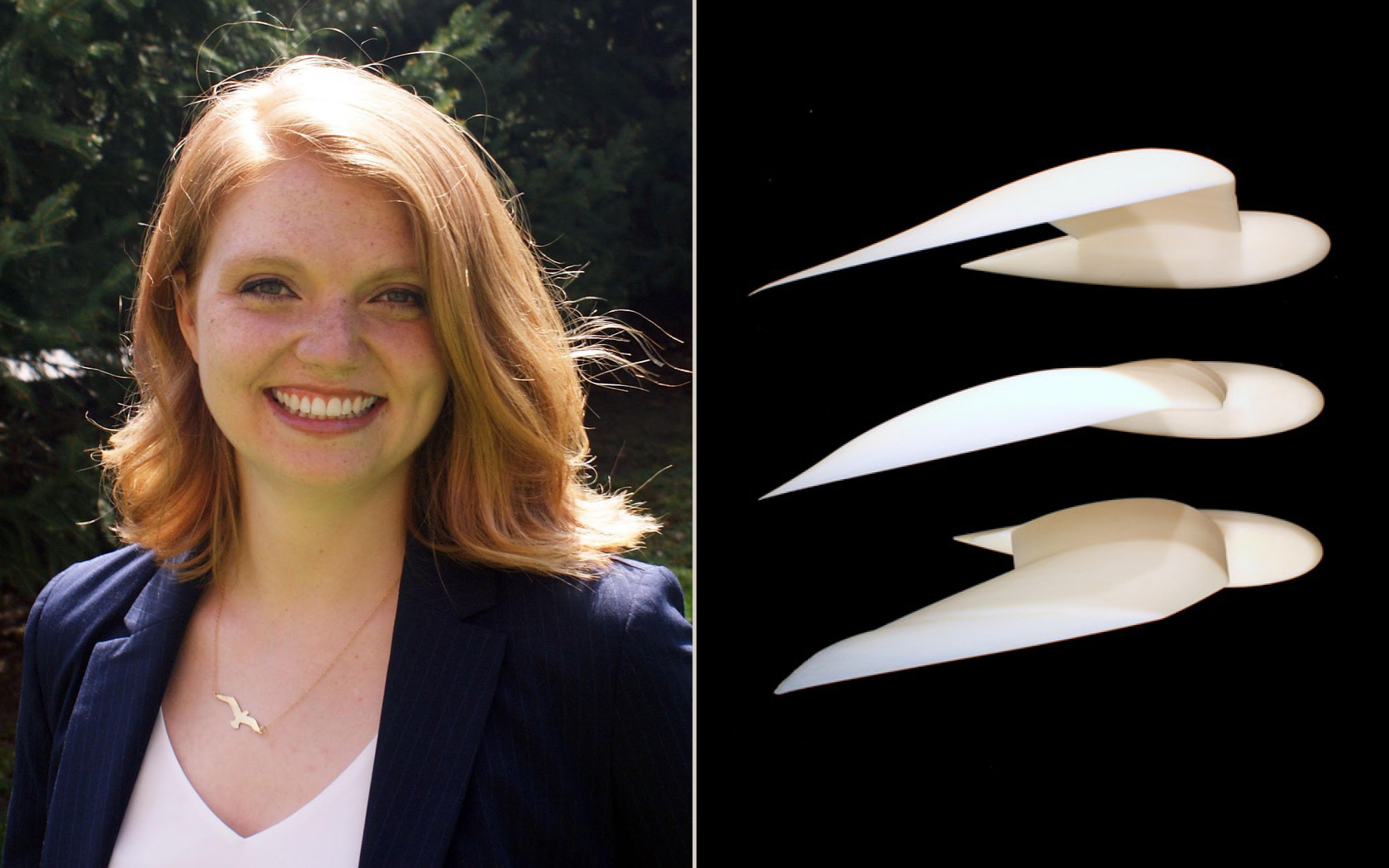As the lead of the Biologically Informed Research and Design (BIRD) Lab at the University of California, Davis, Rackham and U-M aerospace engineering alumna Christina Harvey (Ph.D., ’22) is working to use new insights into the long history of avian flight to inform the next generation of uncrewed aerial vehicles (UAVs).
“I like to phrase my work as looking at the most beneficial components of what birds do,” says Harvey, who is now an assistant professor in the UC Davis Department of Mechanical and Aerospace Engineering. “They can do all kinds of maneuvers that we can’t, and I want to incorporate those capabilities into new UAVs.”
Winged Agility
Harvey says most UAVs fall into two broad categories—small, highly maneuverable drones with power-intensive rotors that limit their flight time, and large fixed-wing aircraft that can maintain longer flight times, but cannot quickly turn or land. Birds, she points out, are often adept at both because their wings have joints at the wrist and elbow, allowing them to morph into different configurations depending on their needs in a given moment.
In its most basic sense, wing morphing constitutes any change in shape to a wing during flight, and by this definition has been a part of wing design since the beginning. Supersonic aircraft have wings that can sweep back, and most aircraft have adjustable wing flaps for maneuverability. Even the famed Wright Flyer, Harvey notes, had very flexible wings of ash, spruce, and fabric that could be manually warped mid-flight. Harvey, however, hopes to implement complete wing shape changes, possibly using an additional joint similar to a bird’s elbow. Doing so introduces a whole host of engineering challenges.
“Birds are able to shift between stable and unstable flight,” she says. “We usually design aircraft for stability, often for safety purposes. Even fighter jets are only designed for near instability, requiring more active control. But birds have a huge swing in their stability characteristics, which indicates that they may have a unique approach to flight control that could allow them to deal with variable environments.”
In March 2022, Harvey and U-M colleagues published a new study in Nature that analyzed the flight characteristics of 22 bird species, quantifying the full range of motion of the birds’ wings. Harvey and her colleagues then developed equations that allowed them to estimate the birds’ flight stability and how it changes. Now, with help from collaborators in biomechanics, ecology, and veterinary sciences, Harvey hopes to use that information to develop new algorithms that could allow similarly sized UAVs to mimic the same nimble trajectory control.

Harvey (left) hopes her research helps develop a new generation of aircraft capable of dynamic wing morphing. Part of this work involves modeling different wing shapes (right) in wind tunnel tests.
“My goal is to tie engineering and biology together so we don’t lose the advantages or ignore the disadvantages of what nature can already tell us about flight,” Harvey says. “This is what I like to call biologically-informed engineering. We’re combining two different approaches to science to push the boundaries of what’s possible.”
Harvey’s journey to melding biology and engineering was not always straightforward. With an undergraduate degree in aeronautical engineering and an interest in bird flight, she joined a zoology master’s program at the University of British Columbia. Her advisor there had joined a research project for the U.S. Air Force seeking to better understand bird wing morphing. That project brought her into contact with Dan Inman, the Harm Buning Collegiate Professor of Aerospace Engineering at U-M, who would become her doctoral advisor.
“My favorite thing to tell people is that life is nonlinear,” she says. “I knew I wanted to work in aerodynamics, but it took spending time in both engineering and biology to find a niche that I love. It allows me to be more creative and gives me the freedom to follow my research wherever it leads.”

